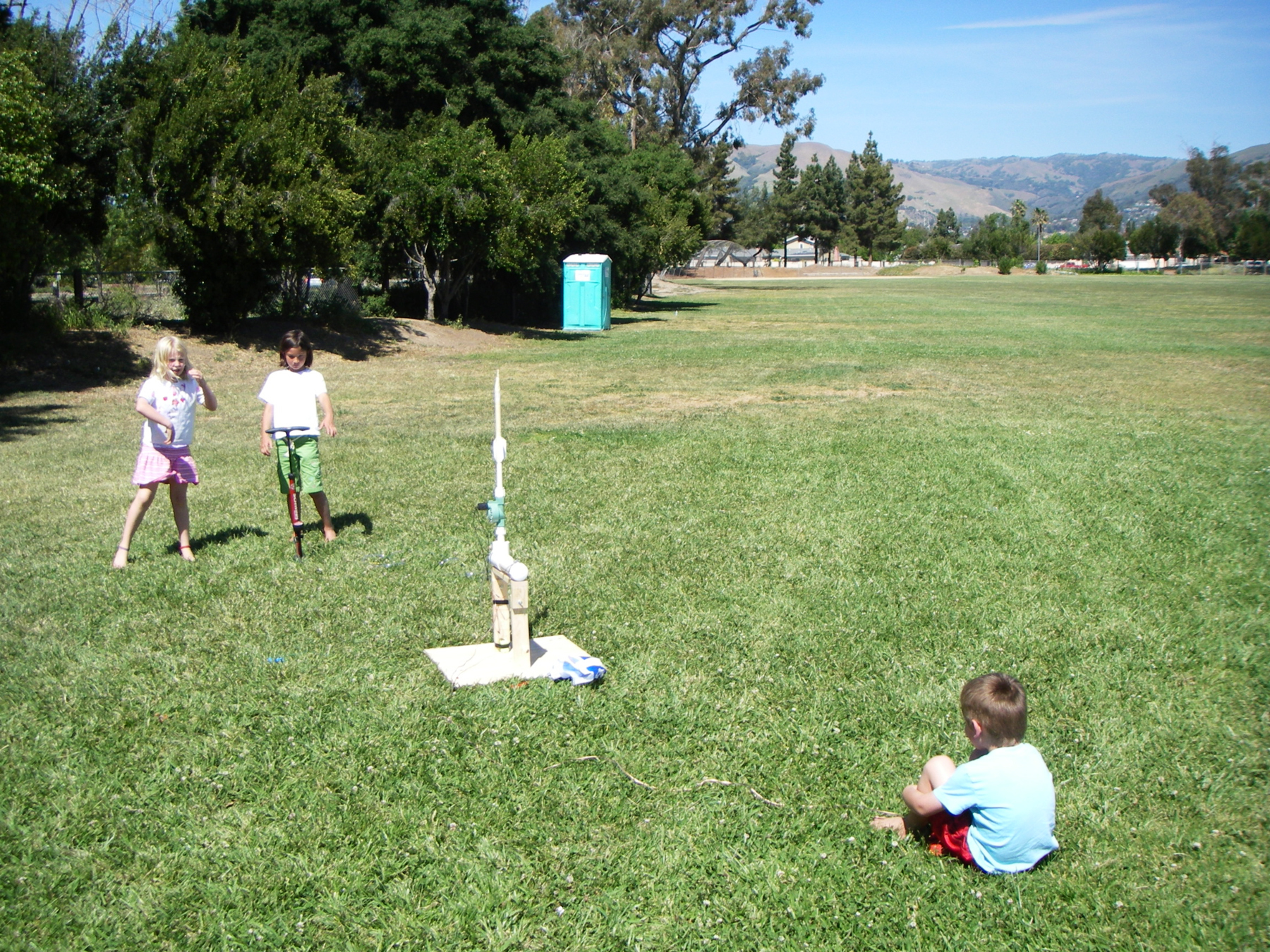Author Note: Since the release of the article in MAKE Magazine Volume 15 in 2008, the Compressed Air Rocket has been popular beyond belief. We’ve sold thousands of kits and Kip Kay’s Weekend Project on YouTube has over one million views! Now we’re rolling out a Version 2.0 of the launcher as well as the much anticipated and first-of-its-kind Air Rocket Glider. Follow us at: AirRocketWorks.com to join the air rocket community and become a backer. – Rick Schertle (Compressed Air Rocket Designer) & Keith Violette (Air Rocket Glider Designer)
Paper, tape, compressed air … lift-off!
Blow your friends away as you send this 25-cent rocket hundreds of feet in the air. You can build this easy launcher and rocket with common hardware store items in an afternoon. All the parts for this simple but impressive air rocket and launcher are cheap and easy to find. Building it is a breeze and the modifications are endless. It’s legal in a big city, reusable, clean, and can be launched even in high winds on a small field. Believe me, folks are quite taken by the 200- to 300-foot flights fueled by 18 or so bicycle pumps of compressed air. Whether you’re launching on your own or with a whole group of rocketeers, watch the crowds gather … 3, 2, 1, and away! Gather materials as listed below, or get the new Compressed Air Rocket kit v2.0 at AirRocketWorks.com



